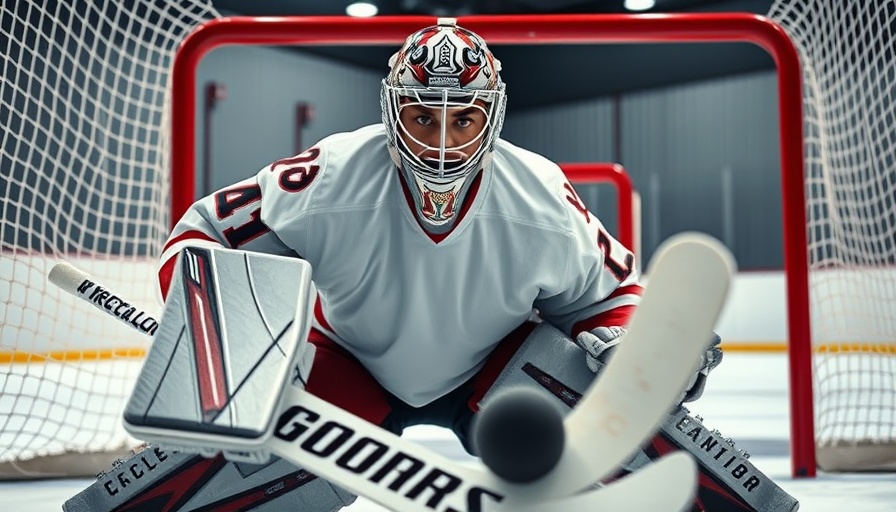
Understanding Angles: A Goalie's Key to Success
The role of a goalie in hockey is notoriously challenging, especially when it comes to managing angles and positioning. As discussed in the video Shots Across The Royal Road | Stay Behind The Puck, having proper positioning and staying behind the puck is crucial. This helps goalies maintain control of incoming shots, especially when facing skilled shooters who know how to exploit openings.
In 'Shots Across The Royal Road | Stay Behind The Puck', the discussion dives into the critical aspects of goalie positioning and techniques, exploring key insights that sparked deeper analysis on our end.
Minimizing Movements and Maximizing Coverage
In the video, the concept of minimizing movement is emphasized. Goalies are taught to stay slightly behind the puck to close off angles that shooters prefer to exploit. The wider one's stance, the more area a goalie covers without needing to over-exert. Adjustments need to be subtle yet effective; every inch matters when facing a puck that can fly across the ice in a split second.
Recognizing Shooter Behavior
An essential part of a goalie’s training involves understanding where shooters commonly aim. As players walk towards the middle of the ice, they create different angles, often making the blocker side larger and the short side smaller. By recognizing these tendencies, goalies can position themselves effectively, forcing shooters to make tougher decisions or misfire.
Key Drills to Improve Goalies' Footwork and Positioning
To internalize these concepts, goalies should engage in specific drills that reinforce their footwork and body positioning. One effective method is practicing lateral movements while staying balanced and ready to shift their weight. Incorporating drills that focus on angle management will help them remain behind the puck while making precise adjustments based on the path of the shooter.
Building Confidence Through Technique
Understanding the intricacies of stance and positioning not only improves a goalie’s technical skills but also boosts their confidence on the ice. Goalies who are well-prepared will feel less pressure when facing aggressive forwards. The psychological aspect of the game is equally important, as confidence can drastically affect performance. Building a strong foundation of skills through practice will create emotionally resilient players.
Parental Support in Goalie Development
For parents of young goalies, understanding the nuances of goaltending can be crucial. Encouraging your child to maintain good positioning and supporting their practice with helpful insights and techniques can lead to significant performance improvements. Watching instructional videos together and discussing them can enhance their learning and make the experience fun and engaging.
In conclusion, recognizing shooter tendencies and establishing effective positioning are vital skills for goalies. By practicing these methods and learning through constructive feedback, both goalies and their supporters can foster a growth-focused mentality that benefits on-ice performance.
If you want to enhance your understanding of goaltending techniques, consider enrolling in specialized training programs or workshops tailored for aspiring goalies.
 Add
Add 

 Add Row
Add Row 


Write A Comment